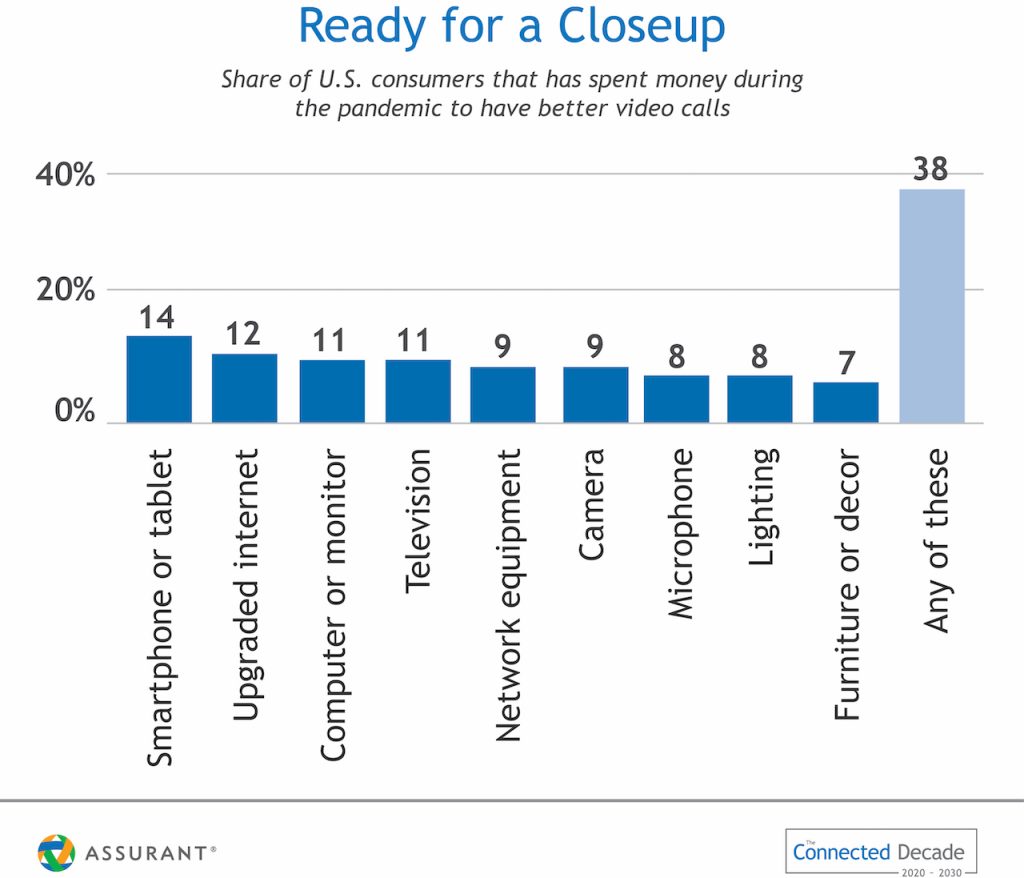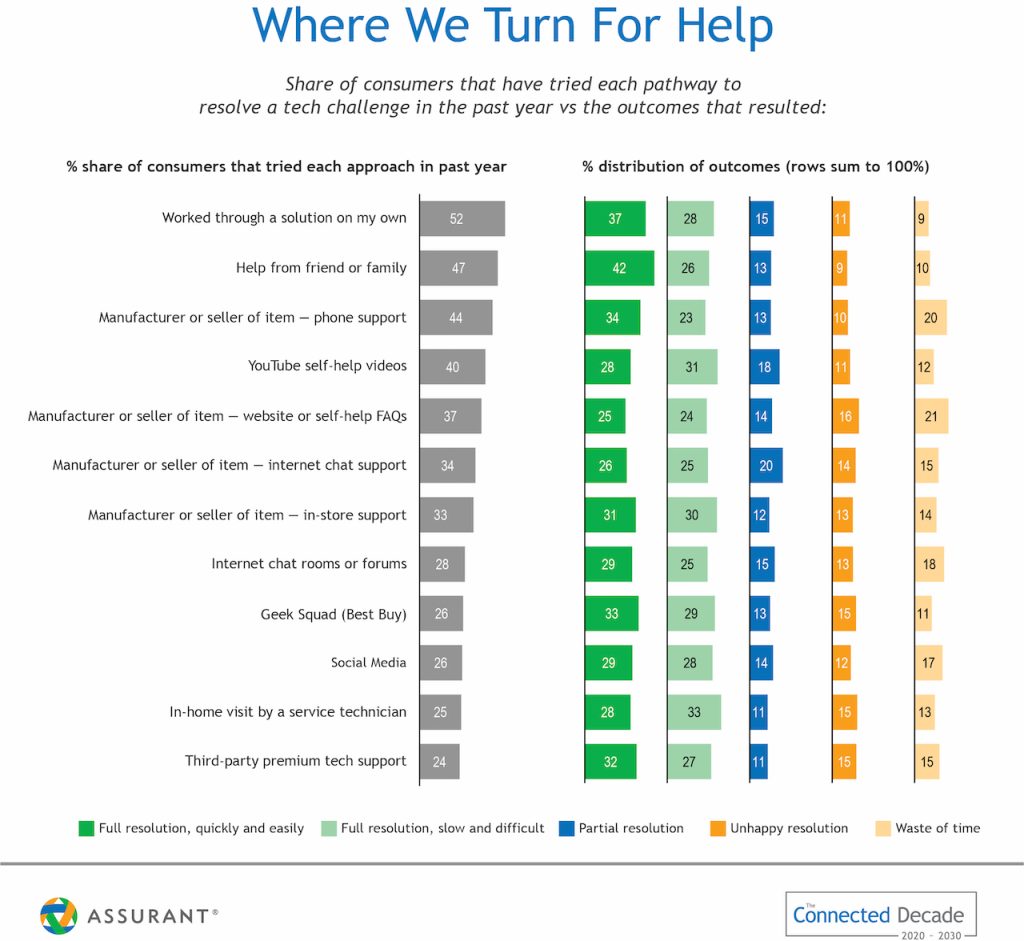The desire for connectivity has turned into a necessity as people continue to work and learn from home. An Assurant survey shows that half (49%) of U.S. consumers report an increased need to be connected as a result of the COVID-19 pandemic. In fact, 40% have connected a new device in their home since the crisis began.
Demand is coming from renters and homeowners alike. An average of 44% of renters say they would have a greater interest in a future rental if smart home products are provided as amenities. This is true across a wide range of connected products. Connected door locks, security, and HVAC systems are the most popular items, with more than half of renters voicing a preference for these features.
Video conferencing has been one of the biggest areas of need. Consumers are now using an average of 3.4 meeting services with Zoom being one of the most popular platforms. Half of the consumers in the U.S. have either started to use Zoom or increased their use since the pandemic began.
No matter which service consumers use, nearly 40% of consumers have spent money to improve their video calls. This includes upgrading their internet connection or purchasing a camera or monitor.

Becoming more connected, however, often comes with more headaches. Three-quarters (74%) of connected consumers have experienced technical challenges in the past year. Even before the pandemic, 36% of smart device owners said they didn’t connect their product because they don’t know-how.
In addition to product issues, 55% of respondents said their internet speeds have been slower since the pandemic began. Before the advent of COVID-19, consumers already were quick to blame their internet service provider for connectivity issues (37%) more than their devices (14%). This is especially true of broadly used devices like a smart speaker or connected TV, versus more niche products like a robotic vacuum.
Where Do Consumers Turn for Tech Support?
So, where do consumers turn to solve issues with their connected products? Most try to resolve the problems themselves. Half (52%) take this approach, followed by turning to friends and family for help (47%).

Fewer consumers look to the manufacturer or seller of connected products for tech support. Only 44% use phone support, with website (37%) and internet chat (34%) options less popular.
Perhaps that’s because consumers are less able to successfully resolve their issues using manufacturer or seller support. Over half (51%) of those using a company’s website support say they were unhappy with their results or only received a partial resolution. Slightly less say the same for internet chat (49%) and phone support (43%). Results from in-store support from these companies fare better (39%), but this likely has become a less attractive option for customers, given the pandemic and social distancing concerns.
While consumers say they like to resolve issues themselves, how truly confident are they in managing their growing connected home? Since the pandemic began, 40% of consumers have indicated they are likely to subscribe to a technical support service that will help them optimize all connected devices in their homes.
But which tech support solution to choose? Using the current average of 19 connected products in the home, that potentially could be 19 separate tech support programs to contact and $1,600 in upfront payments for protection plans. And what if the issue involves more than one device?
Make Support Simple
Given this complexity, CE companies need to find ways to make it easier for consumers to get the help they need for all their devices in the home. Just as greater device interoperability will help boost consumer adoption of connected products, so would better harmonization of tech support solutions.
Start by giving customers one source of support for all their connected products. Make it comprehensive, covering everything from installation to connecting to learning how to get the most out of their purchases. If something goes wrong, make it convenient and stress-free to troubleshoot, repair, or replace the product. For example, Assurant designed its Pocket Geek Home platform as a one-stop-shop offering unlimited tech support and hassle-free protection for all connected devices in the home.
Also, don’t put your customers on a timed meter. Give them unlimited access to support so they feel free to reach out as many times as they need. This will make you the provider of choice, increasing your touchpoints with customers.
To give consumers the confidence to make additional product purchases, enable them to add new devices to their support solution. Let their assurance grow as they successfully integrate more connectivity in their home.
And ensure they get their problem solved quickly. Consumers will go elsewhere if a resolution takes too long or doesn’t fully solve the problem.
In the end, positive support experiences will produce stronger, longer-lasting customer relationships.















